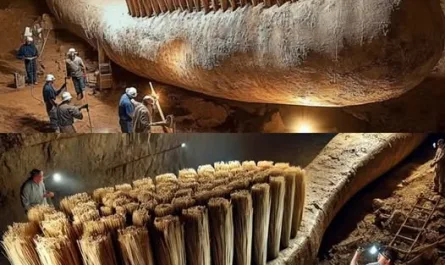Deep in northeastern Ethiopia, the Danakil Depression is one of Earth’s most extreme environments—a scorching, geologically volatile basin that feels like another planet. Amid its hostile terrain of acidic springs, jagged salt flats, and steaming vents, a rare and mesmerizing phenomenon unfolds: electric-blue flames that glow in the night, resembling rivers of molten light cascading down volcanic slopes. Far from being lava, these ethereal flames are a chemical marvel, born from the combustion of sulfuric gases in the Dallol volcanic field, making the Danakil a geological wonder unlike any other.
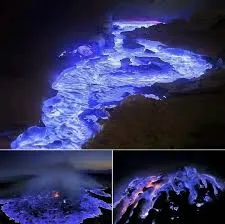
A Hostile, Otherworldly Landscape
The Danakil Depression, straddling the East African Rift in Ethiopia’s Afar Region, is one of the hottest, lowest, and driest places on Earth, with daytime temperatures often exceeding 50°C (122°F) and annual rainfall as low as 100 mm. Situated 125 meters below sea level, it lies where tectonic plates are slowly pulling apart, allowing magma to rise close to the surface. This tectonic activity fuels the region’s surreal features: neon-green acidic pools, sulfur-crusted vents, and salt spires sculpted by wind and heat. The Dallol volcanic field, a geothermal hotspot within the depression, is the epicenter of this alien terrain, its vibrant yellow, green, and orange crusts creating a kaleidoscopic contrast to the barren surroundings.
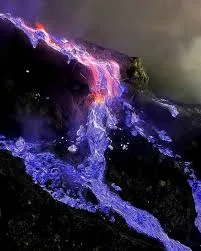
The Blue Flames Phenomenon
The Danakil’s most captivating sight occurs after dark in Dallol, where sulfuric gases escape from volcanic fissures and ignite upon contact with oxygen in the intense heat. This combustion produces vivid blue flames, visible only at night, that flow like liquid fire across the volcanic slopes. Unlike lava, which glows red from molten rock, these flames are a chemical reaction, with sulfur burning at temperatures up to 600°C to create their neon-blue hue. The effect, reminiscent of a sci-fi movie, transforms the landscape into a glowing, otherworldly spectacle.
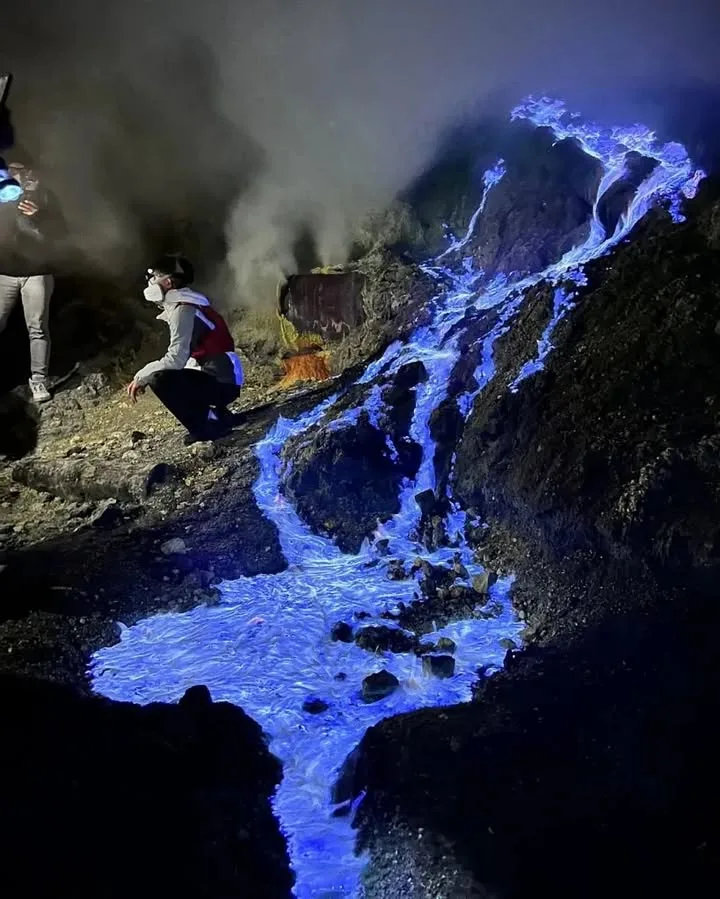
This phenomenon, while also observed at Indonesia’s Kawah Ijen volcano, is rarer and less documented in Ethiopia. At Dallol, the combination of abundant sulfur deposits, extreme heat, and oxygen-rich air creates ideal conditions for the flames, which can appear intermittently during volcanic activity. The surrounding geothermal features—hot springs with pH levels near zero and sulfur chimneys—add to the area’s surreal, almost Martian ambiance.
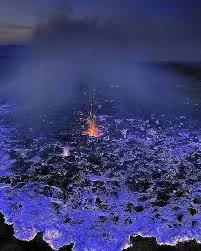
Geological Forces at Work
The Danakil Depression’s unique geology stems from its position along the East African Rift, where the African continent is gradually splitting. This tectonic divergence thins the Earth’s crust, allowing magma to fuel geothermal activity and create Dallol’s volatile landscape. Frequent phreatic eruptions—steam-driven explosions—form temporary craters and deposit sulfur, while salt flats, formed from evaporated ancient lakes, add to the region’s stark beauty. The area’s instability makes it one of the most dangerous places to visit, yet its scientific value is immense, offering insights into Earth’s early conditions and potential analogs for extraterrestrial environments.
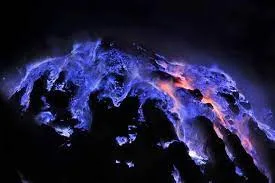
A Perilous Wonder
Visiting the Danakil Depression is not for the faint-hearted. The extreme heat, toxic gases, and lack of infrastructure make it one of the planet’s most inhospitable regions. Guided tours, often departing from Mekele, navigate armed escorts due to the area’s proximity to the Eritrean border and occasional unrest. Yet, for adventurers and scientists, the chance to witness Dallol’s blue flames and psychedelic terrain is unparalleled. The flames, visible only in darkness, require precise timing and conditions, making them a rare privilege for those who brave the journey.

A Glimpse of Earth’s Raw Power
The blue flames of the Danakil Depression are more than a visual marvel—they’re a testament to Earth’s dynamic geology and the raw forces shaping it. In this unforgiving corner of Ethiopia, where sulfur ignites and the crust tears apart, nature stages a light show that feels like science fiction but is rooted in chemical truth. The Dallol volcanic field, with its glowing flames and alien vistas, stands as a reminder of our planet’s wild, untamed beauty, inviting us to marvel at a world both ancient and ever-changing.



